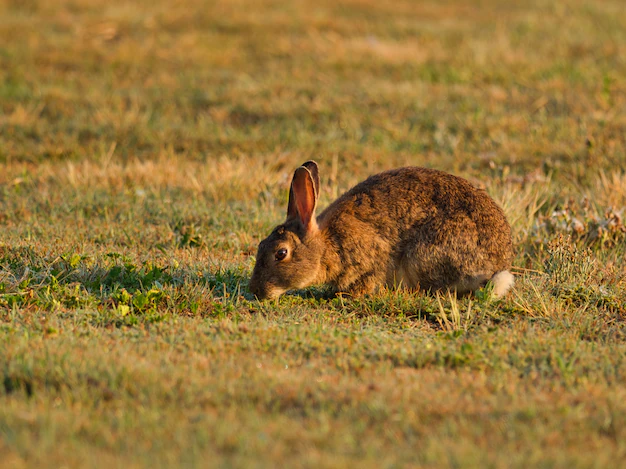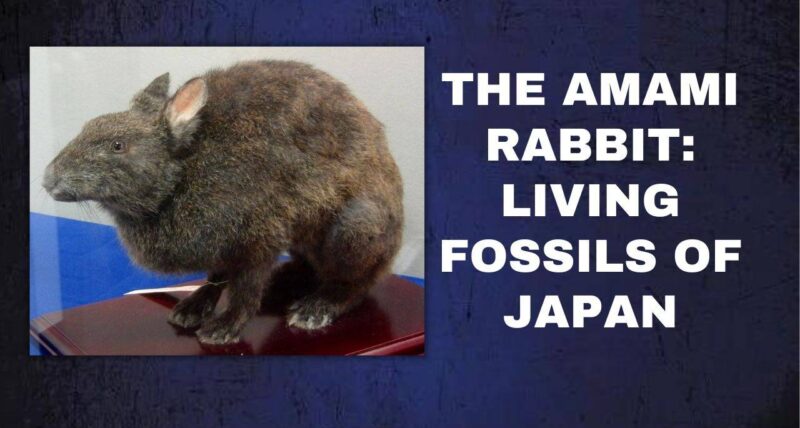As a native of the Amami-Oshima Island in Japan, the Pentalagus furnessi species, also known as the Amami rabbit, is unique. They have recently been in the news about helping a parasitic plant grow throughout the island.
The locals of the Ryukyu islands saw the Amami rabbit nibbling on the fruit of “Balanophora yuwanensis.” To confirm the reported Amami rabbit diet, two students went setting up camera traps throughout the island and did catch the same under the act. The researchers recorded footage of the animal munching on the fruit about 11 times. But the researchers, to be sure whether the seed got to survive through the bunny tummy, did carry on with their expedition. They went through the subtropical island, scooping up the poop of the Japanese Amami rabbit. And finally, did find that the seeds were still in their exact state, ready to grow.
Moving on the island of Tokunoshima and Amami of Japan is the only habitat for rabbits, and there are only 5,400 of them. The decline of their natural habitats and the rise in predator populations is the primary reason for the rabbit species being endangered. Also, illegal human interference with the rabbits living place, poaching & hunting, deforestation, and road accidents are included.
Amami rabbit – Description

Moving on, let’s have a look into the general Amami rabbit features:
- Scientific name: Pentalagus furnessi
- Size: Body: 42 and 52 cm is something between 16.5 – 20 inches. Tail: 0.4 to 1.4 inches. The overall weight of the Amami rabbit is between 2 to 3 kg.
- Amami rabbit diet: The rabbit does feed on 29 plant species, comprising 17 different types of shrubs and 12 different types of herbaceous plants. During summer, they like to eat the pampas grass of Japan, and acorns from the pasania trees are winter favorites.
- Amami rabbit lifespan: They live up to ten years.
- Natural predators of Amami rabbits: Other than humans, Mongooses, cats, and feral dogs do feed on Amami rabbits.
Amami rabbits – The Living Fossils of Japan
Over and over again, you will come across the terms “living fossil” and “Amami rabbit” getting used simultaneously. Making the entire concept far more interesting.
The particular has dark brown fur, is endangered, and only has a habitat within Japan. But the main contribution to it getting termed as a living fossil fuel is the stern resemblance with the ancient ancestors that lived 1 million years before. Both have short hind legs and feet along with small ears (which are otherwise long in the case of other rabbits). However, the ancient rabbits did disappear because of the change in the climatic conditions and facing competition from the European rabbits in most other parts of Asia.
Though the Amami rabbit is endangered but continues to live because of the proximity of the Amami islands to the mainlands of Taiwan and Japan.
Amami rabbit – Interesting Facts
Here is a list of the various interesting facts about Amami Rabbits:
Life:
- The other name of the Amami rabbit is the Ryukyu rabbit.
- Until now, there have been no recorded subspecies of the Amami rabbit.
- Amami rabbits have bulky bodies compared to the other bunnies on Earth.
- November and December are the prime time for them to breed, and the newborns take birth in the burrows.
- The oldest recorded fossil of Pentalagus furnessi dates back to the ice age, around 20,000 years ago. The fossil did contain a few bones and a skull, which were identified after collecting data on the living Amami rabbits of the present day.
- Japan did stop the legal poaching of the Amami rabbits back in 1921.
- The female Amami rabbits are larger than the males. The claws of the same are long and straight in the front legs and have a clawed texture in the hind leg.
Habitat:
- These animals are mainly forest dwellers.
- You will find dens of Amami rabbits, which they use as their nests.
- These animals take shelter in burrows for protection, and their big claws can impact the tough stones and small stones.
- Deep forests and mountainous spaces are the perfect living spot for these rabbits. The Amami rabbits live in areas where they can enjoy both young and mature plant growth.
- These animals live by temporary covers under the soil during the day. Also, researchers did see the same in grasslands, covered with perennial plants and ferns.
- There have been instances of people recording the Amaami frolicking or swimming in the water.
- There are two specific times during the year when the Amami rabbits mate. That is between March to May and September to December.
- The primary mating process starts with the male rabbits approaching the female rabbits.
- Female Amami rabbits have two burrows. The first is their living habitat, while the second is used for birthing and nesting purposes.
- After three to four months of birth, the young ones start living independent life of their own.
Living Techniques:
- The animals are nocturnal and dig up underground passages throughout the forest, to move.
- Quite large and heavy claws are one of the distinctive characteristics of the Amami rabbits.
- The Amami rabbits are shy and do get afraid at the sight of large animals. They like dwelling in isolation. Also, the home range of one Amami rabbit is at a distance from the other and never will overlap between two females. One male can have their home in close proximity to another female, Amami.
- Amami rabbits send sounds and signals to indicate looming dangers when a predator is nearby. Also, other signals include them indicating “mother is back home.” some researchers have also noted them using sounds for mating. While most sounds are vocal, some are also made by pounding the hind limbs on the ground.
Japan’s government tries to conserve the natural growth of Amami rabbits as much as possible by declaring special acts and punishing the illegal poachers. However, there is no such act against people damaging the natural habitat of the same, so the situation continues to get even worse.



